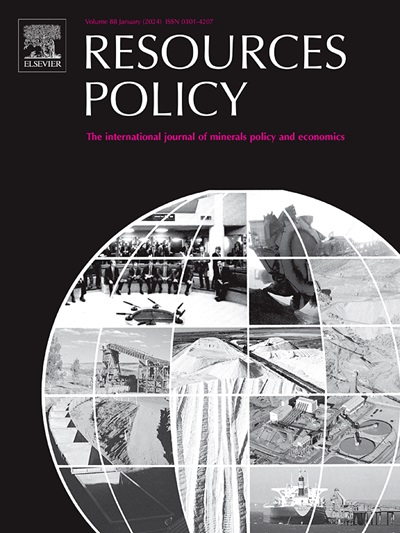基于事件分析的区域原材料供应风险可视化
IF 10.2
2区 经济学
0 ENVIRONMENTAL STUDIES
引用次数: 0
摘要
实现稳定和有弹性的矿物供应需要充分了解不同区域存在的各种危险因素,这些因素的严重程度各不相同。传统的临界性评估通常使用国家级指标考虑政治稳定性和投资吸引力等风险因素。然而,由于缺乏数据和评估方法,一些严重的风险因素尚未纳入考虑。本研究通过对历史事件的荟萃分析,量化了自然灾害、事故和罢工等新风险领域的国别风险。93个来源国的风险评分是根据涉及这些事件的记录数量计算出来的,这些记录是通过使用三种不同的事件分析方法进行文件调查获得的。我们的分析显示,资源丰富的发达国家,如澳大利亚和加拿大,由于事件的高频率,风险得分很高,这表明与传统的供应风险评估领域相比,区域风险具有明显的特征。本研究强调了事件分析为供应链风险管理政策设计提供证据的重大潜力。本文章由计算机程序翻译,如有差异,请以英文原文为准。
Visualizing the regional risk in raw material supply based on event analysis
Achieving stable and resilient mineral supply requires a good understanding of the diverse risk factors present in various regions, which vary in their severity levels. Conventional criticality assessments typically consider risk factors such as political stability and investment attractiveness using country-level indicators. However, there are severe risk factors that have yet to be incorporated due to the lack of data and methodology to evaluate them. This study quantifies country-specific risks of new risk domains such as natural disasters, accidents, and labor strikes through a meta-analysis of historical events. The risk scores for 93 source countries are calculated based on the number of records referring to those events, which were obtained through document investigation using three different approaches to event analysis. Our analysis reveals high risk scores for resource-rich developed countries like Australia and Canada due to the high frequency of events, which suggests a distinct feature of regional risk compared to the conventional domains of supply risk evaluation. This study highlights the significant potential of event analysis to provide evidence for policy design in supply chain risk management.
求助全文
通过发布文献求助,成功后即可免费获取论文全文。
去求助
来源期刊

Resources Policy
ENVIRONMENTAL STUDIES-
CiteScore
13.40
自引率
23.50%
发文量
602
审稿时长
69 days
期刊介绍:
Resources Policy is an international journal focused on the economics and policy aspects of mineral and fossil fuel extraction, production, and utilization. It targets individuals in academia, government, and industry. The journal seeks original research submissions analyzing public policy, economics, social science, geography, and finance in the fields of mining, non-fuel minerals, energy minerals, fossil fuels, and metals. Mineral economics topics covered include mineral market analysis, price analysis, project evaluation, mining and sustainable development, mineral resource rents, resource curse, mineral wealth and corruption, mineral taxation and regulation, strategic minerals and their supply, and the impact of mineral development on local communities and indigenous populations. The journal specifically excludes papers with agriculture, forestry, or fisheries as their primary focus.
 求助内容:
求助内容: 应助结果提醒方式:
应助结果提醒方式:


